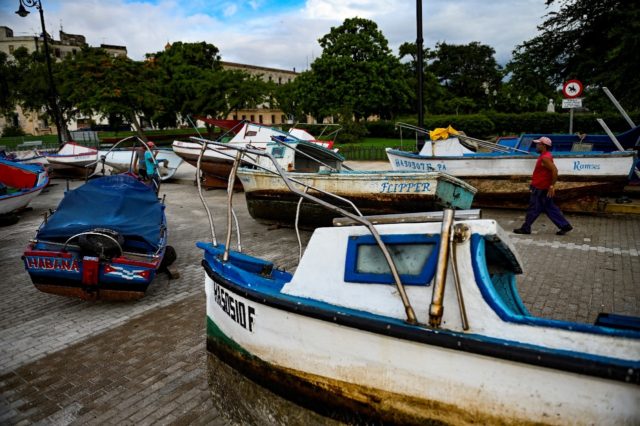As it moved toward Florida’s Gulf Coast early Wednesday, Elsa weakened to a tropical storm, though it still barreled inland with gusty winds and heavy rains, the US National Hurricane Center said.
While some fluctuations in intensity remain possible until landfall later Wednesday morning, the hurricane warning for much of the state’s west coast has been replaced with a tropical storm warning, the NHC said.
Governor Ron DeSantis estimated the storm would come ashore on the northern Gulf Coast somewhere between 8 am and 9 am local time (1200-1300 GMT), and called on Floridians to have weather alerts on their phones.
“This is not a time to joyride,” he said at a Tuesday night press briefing. “You do have hazardous conditions out there.”
The storm was located about 70 miles (115 kilometers) northwest of Tampa with maximum sustained winds near 65 mph (100 km/h), the NHC said in a public advisory at 5 am.
A warning for possible hurricane conditions remains in effect for a roughly 100-mile northern stretch of the state’s western coastline, according to the advisory.
Over the weekend, Elsa battered Jamaica and Cuba, claiming at least three lives as it cut a path of destruction through the Caribbean.
It was logged as the first hurricane of this year’s Atlantic season on Friday before being downgraded to a tropical storm again.
With gusting winds, storm surges and tornado watches, Elsa has complicated an already challenging search mission after the deadly condo tower collapse in Miami almost two weeks ago.
Tampa airport, facing a possible storm surge of up to five feet (1.5 meters), suspended commercial flights from 5:00 pm Tuesday until at least 10:00 am Wednesday.
Florida Lieutenant Governor Jeanette Nunez called on state residents to prepare for the storm, including the possibility of power blackouts and asked people to stockpile adequate supplies of food and water.
“If you are asked to evacuate, please leave,” she said, reminding people that there were emergency shelters ready to accommodate them.
But its forecasted westward path meant Florida appeared set to avoid the worst of the storm, with the southwest coast of the state set to experience a glancing blow rather than the direct hit expected earlier.
In Surfside, on Florida’s east coast, workers on Sunday used explosives in the controlled demolition of the still-standing portion of a collapsed condo building — a job accelerated for fear Elsa might topple the structure.
The condo disaster left 36 confirmed deaths, 29 of whom have been identified, but another 109 people are still listed as missing.
On Monday, Miami-Dade County Mayor Daniella Levine Cava told CNN that officials were “very hopeful” that, with Elsa’s current path, they would not have to pause search-and-rescue efforts after all.
States of alarm
The NHC had said Elsa packed maximum sustained winds of 50 miles per hour as it churned across Cuba near Havana.
States of alarm were sounded in the provinces of Havana, Mayabeque and Artemisa as thousands were evacuated from their homes — efforts complicated by Covid-19 as Cuba endured its worst chapter yet of the pandemic.
“Protecting ourselves against Elsa cannot mean letting our guard down against Covid,” Prime Minister Manuel Marrero said.
Shops closed in Havana and driving was restricted to civil defense vehicles.
Elsa claimed two lives in the Dominican Republic and a third in the island state of Santa Lucia during its earlier approach through the Caribbean, the Caribbean Disaster Emergency Management Agency (CDEMA) said.
Cuban President Miguel Diaz-Canel said late Sunday on Twitter that there had only been damage to farm crops.
Elsa’s advent represented the earliest date ever that a fifth named storm — which does not typically arrive before August — has struck the region.

COMMENTS
Please let us know if you're having issues with commenting.